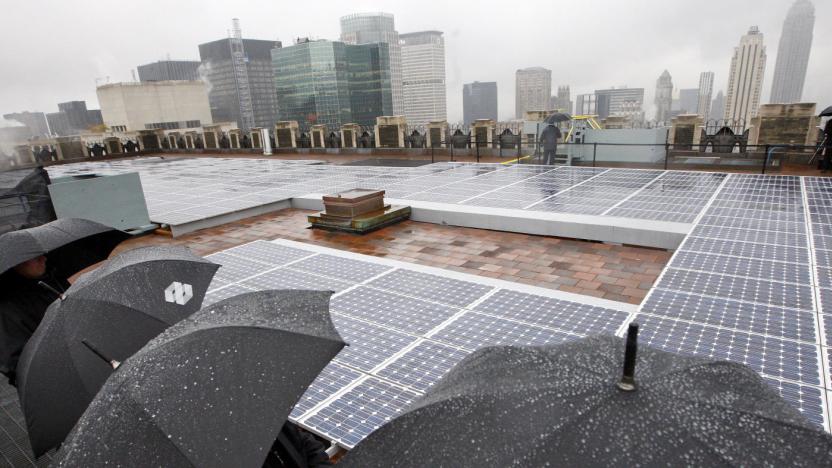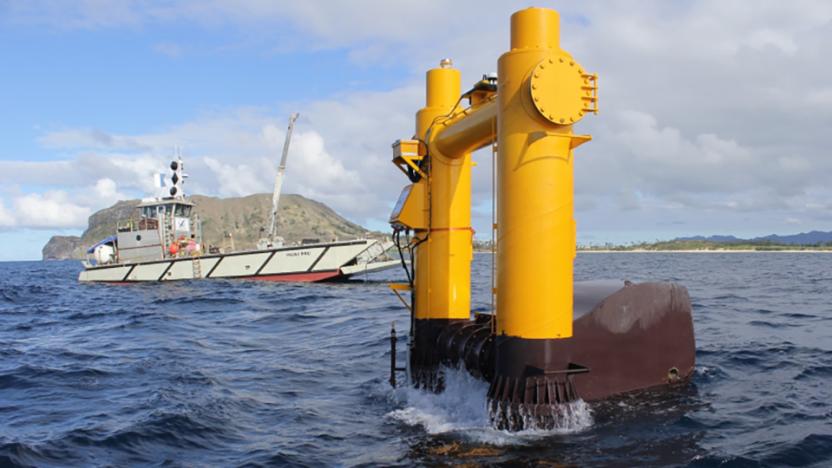timeline16gonegreen
Latest

Study: we can ditch fossil fuels in 10 years, if we want to
The quest to end the use of fossil fuels might not be as daunting as you think. A University of Sussex study claims that humanity could drop coal and oil within a decade, based largely on historical evidence that many tend to overlook. Professor Benjamin Sovacool notes that energy transitions have happened quickly whenever there was a combination of "strong government intervention" with economic or environmental incentives to switch. It only took 11 years for the Canadian province of Ontario to abandon coal energy, for example, while nuclear power surged to 40 percent of France's electricity supply within 12 years. In the case of fossil fuels, it's a combination of climate change worries, dwindling resources and advanced technology that could step up the pace.

World's largest coal mining firm declares bankruptcy
It won't shock you to hear that the coal industry is facing tough times lately. Job cuts, mine closures and other signs of financial trouble are par for the course. However, that downturn just reached an important milestone: Peabody Energy, the world's largest private coal mining company, has filed for Chapter 11 bankruptcy across most of its US divisions. The firm says it didn't have much choice between steep drops in the price of coal, a weak Chinese market, overproduction of shale gas and "regulatory challenges" (read: better environmental policies). In plainer terms, people just aren't as interested in coal energy as they were in years past.

Solar cell generates power from raindrops
Rain is normally a solar energy cell's worst nightmare, but a team of Chinese scientists could make it a tremendous ally. They've developed a solar cell with an atom-thick graphene layer that harvests energy from raindrops, making it useful even on the gloomiest days. Water actually sticks to the graphene, creating a sort of natural capacitor -- the sharp difference in energy between the graphene's electrons and the water's ions produces electricity.

Google puts money into cementing green energy standards in Asia
Plenty of big tech companies are looking to source green energy whenever they can for their substantial energy needs, and Google is the same. But it looks like it's hard to find the renewable energy you're looking for in Asia -- specifically China, which is why the company says it's offering seed funding to the Center for Resource Solutions. The non-profit is going to bring its experience in setting up and running renewable energy certification programs to Asia, starting in Taiwan. That's good, because that's right where Google needs green power for its data center.

Moth eyes inspire solar cells that work indoors
As a rule, most solar cells need to catch direct sunlight. Even those that work indoors can only do so much to generate power from artificial light sources. However, British researchers have found a clever (and decidedly) unusual way to harvest energy while inside: by imitating moths. They've created a graphene-based material that traps electromagnetic waves much like a moth's eye, making it one of the most energy-absorbent substances to date. With the right antennas, it could produce energy from not just sunlight, but any device that emits microwave or radio waves -- your smartphone could help power your smartwatch.

Google makes big clean energy purchase to power data centers
Powering Google's online empire takes a lot of energy, and the company wants to use all clean sources to run its data centers by 2025. The company announced the next step towards that milestone today with word that it purchased 842 megawatts of renewable energy on three continents. The purchase includes solar and wind power in locales that range from North Carolina to Chile and Sweden, doubling what it had bought so far. Google says today's announcement is the largest purchase of clean energy by a non-utility company ever.

Gates, Zuckerberg and Bezos invest in huge clean energy fund
After announcing the Mission Innovation program to convince nations to double their clean energy investment budgets, Bill Gates has launched another massive initiative at the United Nations Climate Change conference in Paris. The Breakthrough Energy Coalition is backed by a who's who of tech leaders, including Mark Zuckerberg, Jeff Bezos, Jack Ma and Richard Branson. The idea is to develop new green technology that will increase the world's energy output -- especially in poor countries -- without contributing to global warming. Such tech, however, poses a risk that regular investors might shy away from. "We need the basic research, but we need to pair that with people who are willing to fund high-risk, breakthrough energy companies," said Gates.

Apple invests in more clean power for Chinese manufacturing
It's no secret that Apple takes its energy responsibilities seriously. It already powers a large percentage of its buildings via renewable sources, but ensuring that its manufacturing facilities run on clean energy isn't as easy, especially when it has partners located in various different regions. China is now Apple's fastest growing market, but it's also where the majority of its products are assembled, so it's embarking on two new programs to improve its environmental impact in the country.

Wave generator supplies US electrical grid for the first time
A prototype wave generator called Azura is supplying grid power to Hawaii, the first time such a feat has been officially verified, according to the US Department of Energy (DoE). Though it can only produce 20 kilowatts, the DoE said that similar devices could eventually provide large amounts of clean power to coastal cities. The project is co-sponsored by the US Navy and was developed by an Oregon-based company called Northwest Energy Innovations (NWEI). It's located at the Navy's Wave Energy Test Site in Kaneohe Bay in Oahu, at a depth of about 30 meters (100 feet).

These seven climate science projects could save the world
The human race is doomed, and it's all our own fault. With the quantity of carbon in our atmosphere now well beyond the safe limit, it's almost certain the planet's temperature will continue to rise. Climate change is causing natural disasters of biblical proportions; a situation that's only going to get worse as time progresses. We all need to work harder to improve this situation by using less energy and behaving more responsibly. But since some people will never be convinced the Earth's rapidly approaching the end of its humanity-hospitable era, we're now in dire need of alternative options to save us from ourselves. To help get the word out, we've compiled a list of some of the most exciting scientific projects we've seen of late that could, if successful, undo some or all of the damage we've caused. [Image: Lisa Werner / Alamy]

Renewables are now Scotland's biggest energy source
If we're to protect our planet for future generations, it's paramount that governments invest in renewable sources of energy. Scotland appears to have turned that corner, after government figures revealed it's now generating more power from "clean" technologies than nuclear, coal and gas. The combination of wind, solar and hydroelectric, along with less-publicised sources such as landfill gas and biomass, produced 10.3 terawatt hours (TWh) in the first half of 2014. Over the same period, Scotland generated 7.8TWh from nuclear, 5.6TWh from coal and 1.4TWh from gas, according to figures supplied by National Grid. Renewable sources tend to fluctuate throughout the year, especially in Scotland where the weather is notoriously volatile, but in six-month chunks the country has consistently increased its renewable output. It's not the only one pushing a green agenda either; Germany's reliance on renewables is increasing and the output from the rest of the UK, especially England, is on the rise. We're a long way from dropping fossil fuels completely, but these are important steps on the road to tackling climate change.






